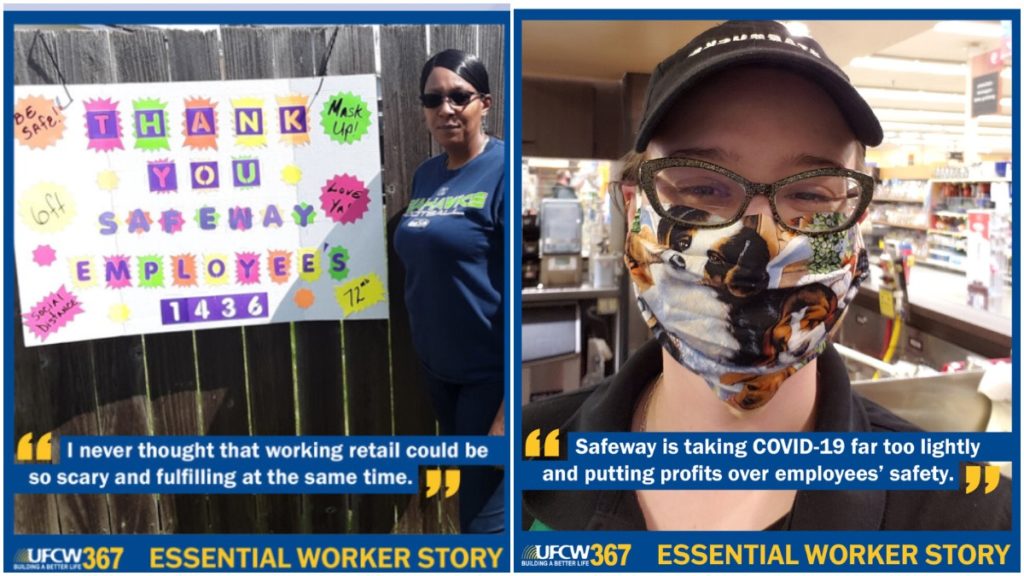On Jan 25, the Seattle City Council voted in 8 to 0 in favor of an ordinance requiring grocery companies with more than 500 employees worldwide and grocery stores larger than 10,000 square feet pay their employees $4 an hour on top of the pay they currently. This law will remain in effect until Seattle’s current COVID-19 civil emergency is declared over.
According to the Seattle Times, “A parade of union officials and grocery workers testified before the City Council on Monday in support of the pay boost, citing the increased risk workers have taken on and the increased profits of many of their employers.”
Stock prices of all the major grocery outlets (Kroger, Walmart, Amazon and Target) have gone up since the start of the pandemic. Councilmember Teresa Mosqueda, the legislation’s lead sponsor said “Grocery store workers face serious risks of COVID infection and the least we can do is provide them with protective gear, access to vaccines and the City Council, acting today, to make sure they have hazard pay.” Other cities in the United States that have adopted ‘hazard pay’ boosts in the last month include Los Angeles, Berkeley and Long Beach, California. (Seattle Times)
Many grocery chains had offered extra pay to grocery workers last spring, but that practice went away by early summer.
Keely Freudenstein, a member of United Food and Commercial Workers International Union Local 367, employed at Albertsons in Lacey, Washington, said that when the pandemic shutdown began in March 2020 there was a $2 an hour boost in pay that ended in June. He told Liberation News that it was not really called “hazard pay,” the wording was more like “appreciation pay.” When the “appreciation pay” ended there was a lump sum payment based on an algorithm of average hours worked since March times $2/hour that was ridiculously and insultingly small after taxes.

Ongoing job site issues continue to be lack of adequate PPE supplies, inadequate disclosure of fellow employees testing positive for the COVID-19 virus and customers refusing to wear masks while shopping. One pertinent fact is that the union is legally constrained from going on strike until the current contract comes up for negotiation, which will not happen for at least another year. Until the contract comes up for negotiation the only recourse are informational pickets and lobbying for city and county-wide ordinances for hazard pay like what happened in Seattle.
Liberation News also interviewed Eric Buerk, with UFCW Local #21, employed at Safeway in Seattle. He explained that Teresa Mosqueda, the sponsor of Seattle’s “hazard pay” for grocery store workers in Seattle, was heavily supported by UFCW Local #21 when she ran for City Council. He confirmed that there had been a slight bump in pay during the early part of the pandemic from the middle of March until the start of July, 2020. This bump in pay was never called “hazard pay.” His impression was that it was more about keeping employees from quitting while there was panic buying for items such as toilet paper and sanitizer.
Buerk opined that as things were “flying off the shelves” and Safeway was raking in the cash, management needed front line employees on site to staff the cash registers. The extra “appreciation pay” was on a week-by-week basis. There was simultaneously a massive hiring campaign. Buerk’s impression was that as soon as the staffing needs were secure, the “appreciation pay” evaporated.
The Seattle ordinance is a step in the right direction, but only helps grocery workers who work in Seattle. Upon hearing about Seattle’s passing of the $4/hour “hazard pay” ordinance, Freudenstein in Lacy said,
“It’s a good step and people on the forums are excited. I think that the critical message is that while these companies are profiting during the pandemic, and my company went public on the stock market, they’re intent on keeping wages down to seem more profitable and buoy a stronger stock showing. The people out there making the value, the people actually out there risking something, are cut out of this wealth.”





